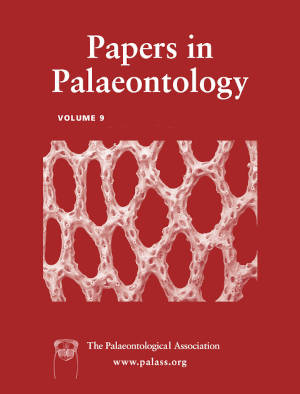Article: Redefining the Huayquerian Stage (Upper Miocene to Lower Pliocene) of the South American chronostratigraphic scale based on biostratigraphical analyses and geochronological dating
Publication: Papers in Palaeontology
Volume:
9
Part:
6
Publication Date:
2023
Article number:
e1539
Author(s):
Cristo O. Romano, Alberto C. Garrido, David L. Barbeau Jr, Rocío B. Vera, Ricardo Bonini, Alberto Boscaini, Esperanza Cerdeño, Laura E. Cruz, Graciela I. Esteban, Marcelo S. de la Fuente, Marcos Fernández-Monescillo, Juan C. Fernicola, Verónica Krapovickas, M. Carolina Madozzo-Jaén, M. Encarnación Pérez, François Pujos, Luciano Rasia, Guillermo F. Turazzini, Bárbara Vera, Ross D. E. MacPhee, Analía M. Forasiepi, and Francisco J. Prevosti
DOI:
10.1002/spp2.1539
Abstract
Abstract The Huayquerian Stage of the South American chronostratigraphic scheme (named for the Huayquerías del Este, Argentina) was originally based on a poorly known mammal association of six taxa from the Huayquerías Formation. We studied the geology, age and fauna of the Neogene sequence in this area, including the Huayquerías, Tunuyán and Bajada Grande formations. The sequence comprises a monotonous succession of synorogenic epiclastic sediments deposited under arid to semi-arid conditions. Zircon U–Pb dates from 10 tuffaceous levels (7.2–1.6 Ma) place deposition of the Huayquerías Formation during the late Tortonian or Messinian to early Zanclean, the Tunuyán Formation during the Zanclean–Piacenzian, and the Bajada Grande Formation during the Piacenzian–Calabrian. We present 43 and 31 new mammal taxon records for the Huayquerías and Tunuyán formations, respectively. Progressive faunal change was observed along the sequence. The first records of the Chaco tortoise Chelonoidis chilensis and the notoungulate Xotodon major, and the latest records of Interatheriidae and Typotheriopsis (notoungulates), Metacaremys calfucalel, Phtoramys hidalguense and Lagostomus pretrichodactyla (rodents), Chasicotatus ameghinoi and Macroeuphractus morenoi (xenarthrans) are reported. The faunal associations of the Huayquerías and lower Tunuyán formations are highly similar to each other, and to other coeval localities in Argentina. The Macroeuphractus morenoi Assemblage Biozone is proposed as the basis for redefining the Huayquerian Stage, due to the co-occurrence of three taxa with wide geographical distribution in southern South America: Macroeuphractus morenoi, Pseudotypotherium subinsigne and Lagostomus pretrichodactyla. The age of this biozone is constrained at c. 8–5 Ma in its type area.
